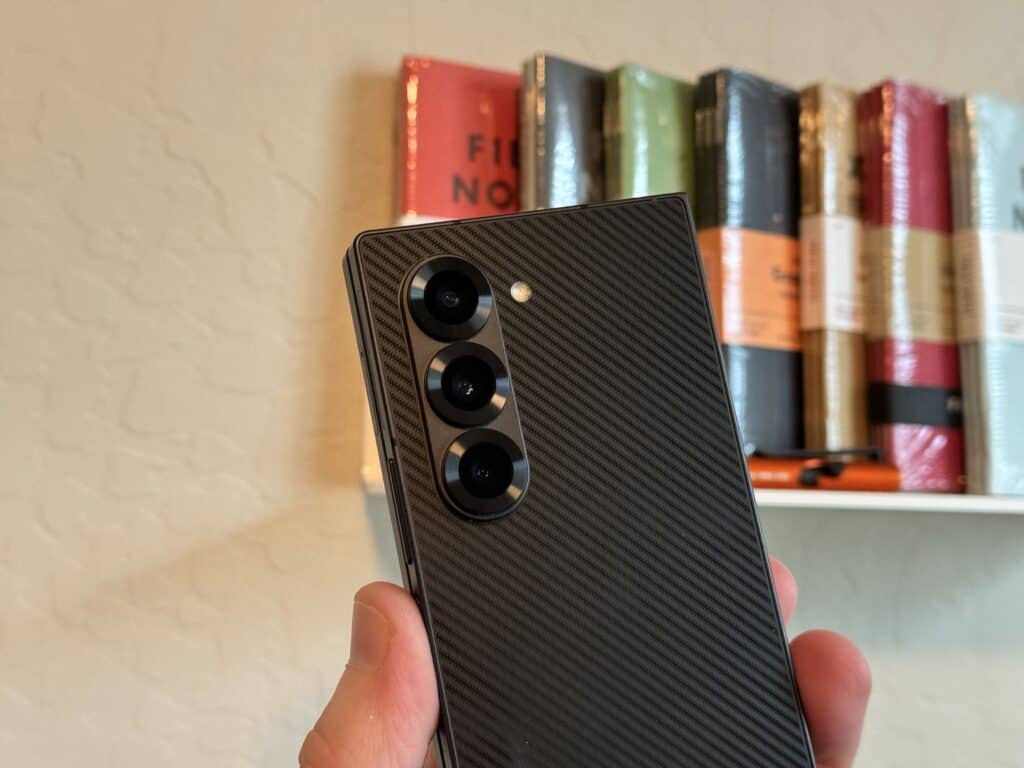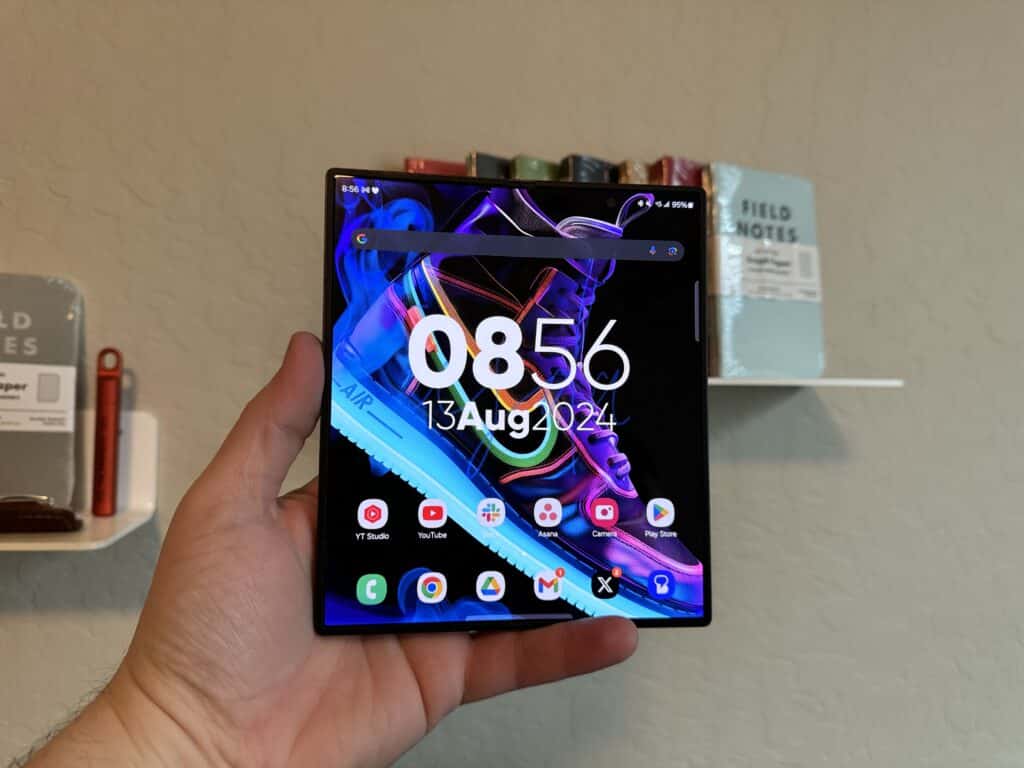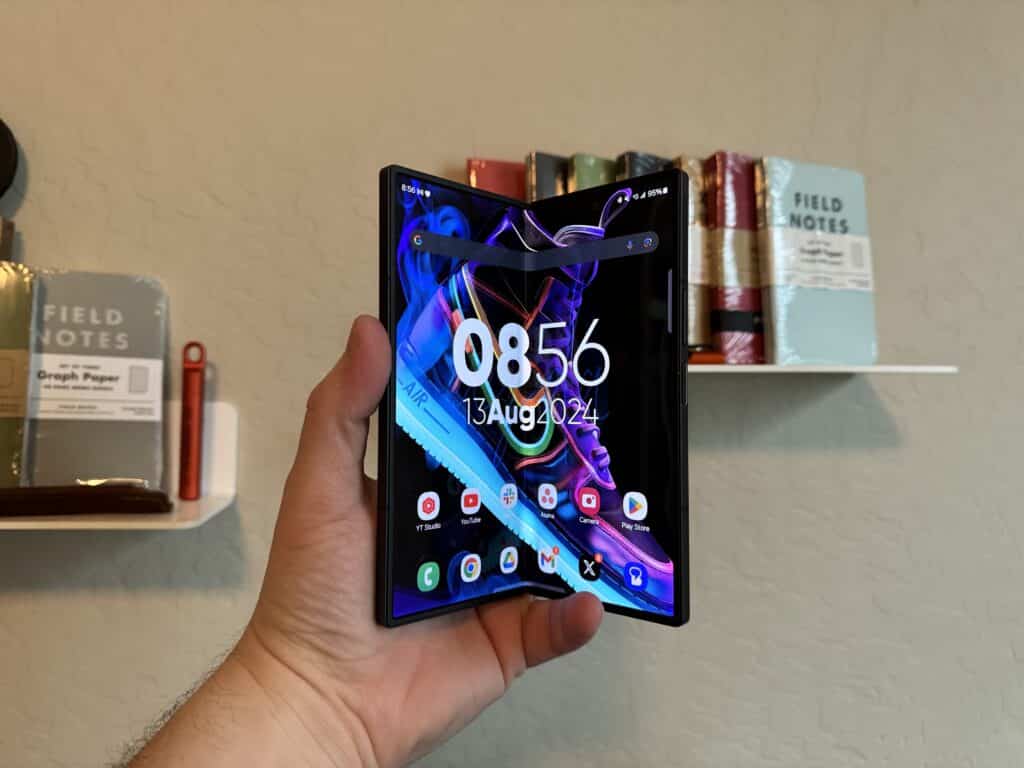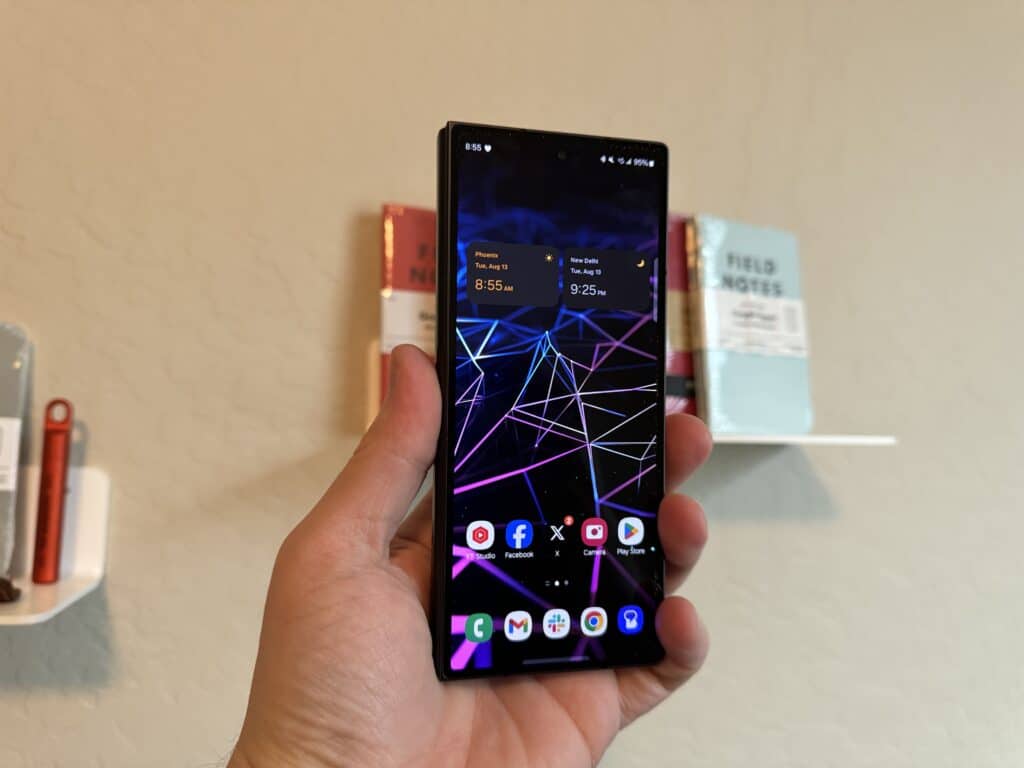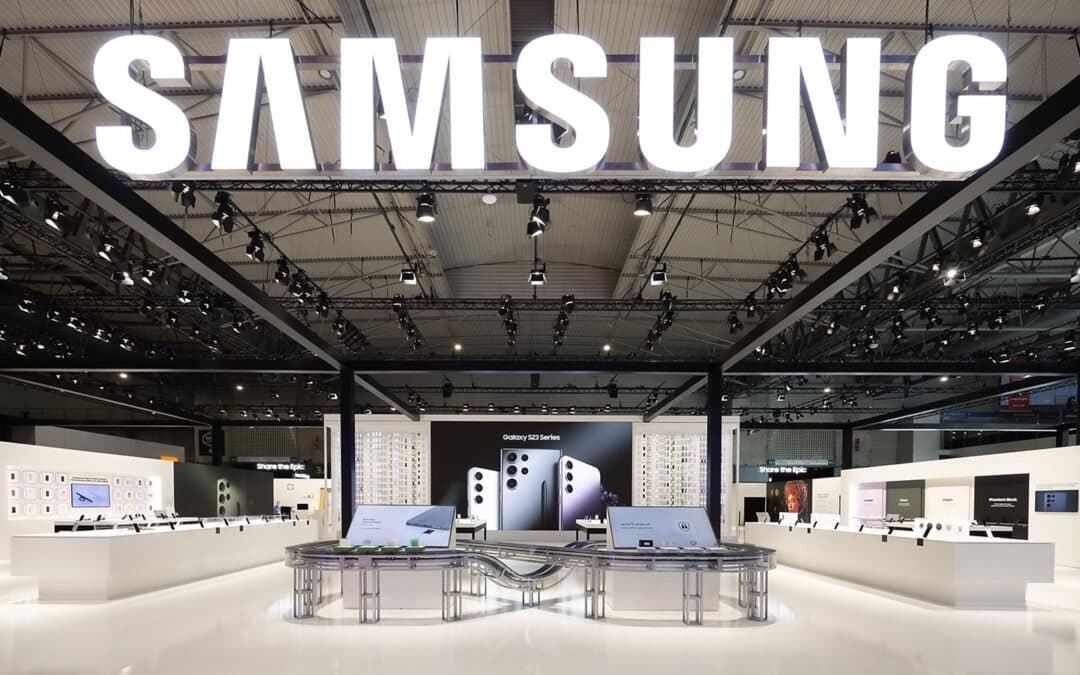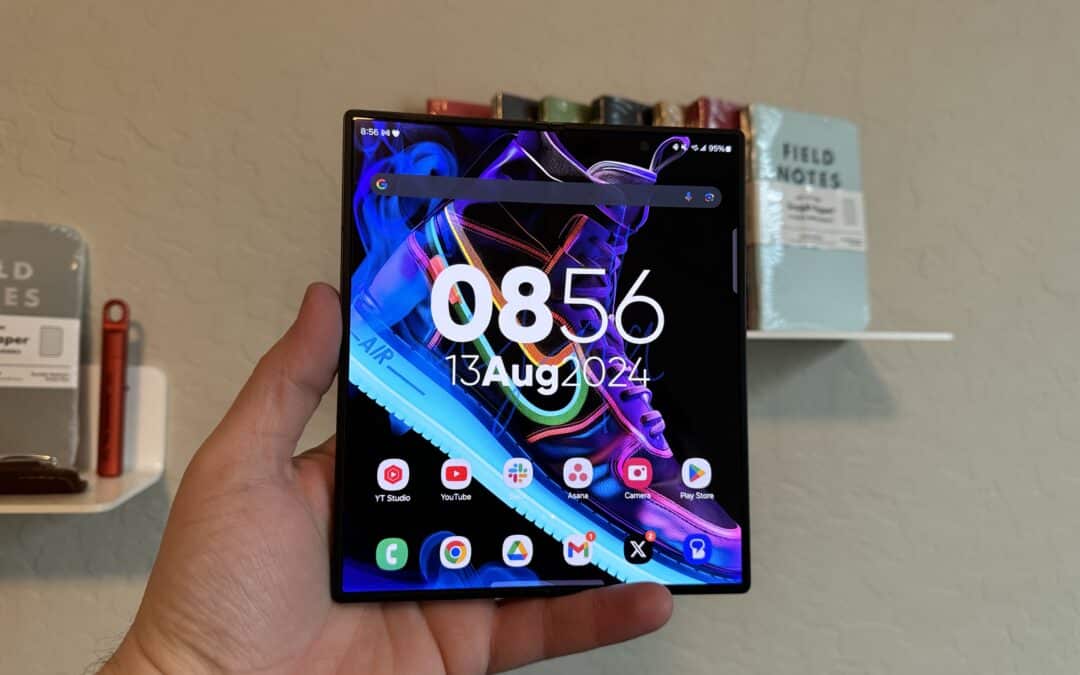Alongside the Pixel 9 series smartphones, Google launched its second-gen foldable. It didn’t name the device Pixel Fold 2, instead choosing to call it Pixel 9 Pro Fold. The new foldable brings upgrades all around and finds itself up against Samsung’s Galaxy Z Fold 6 launched last month. But can it really put up a fight or perhaps outclass the Samsung foldable? Let’s compare the Pixel 9 Pro Fold and Galaxy Z Fold 6 and find out.
Table of contents:
Galaxy Z Fold 6 vs Pixel 9 Pro Fold: Design and Hardware
The Pixel 9 Pro Fold and Galaxy Z Fold 6 sport two distinct design languages. The former has a rounded finish with a thick and wide camera bump, while the latter features a boxy body with a vertical camera array. Both companies improved their hinge technology this year for enhanced durability and functionality. The devices fold flat and feel solid when folding or unfolding. The aspect ratio differences do not affect their build quality.
Speaking of the aspect ratio, Google’s foldable is almost square when unfolded, while Samsung’s has a rectangular build (this makes the cover screen tall—more about it below). The Galaxy has an unfolded dimension of 153.5 x 132.6 x 5.6 mm and a folded dimension of 153.5 x 68.1 x 12.1 mm. The Pixel measures 155.2 x 150.2 x 5.1 mm and 155.2 x 77.1 x 10.5 mm.
As you can see, the Pixel 9 Pro Fold is bigger but thinner than the Galaxy Z Fold 6. A bigger profile means it has bigger screens and a bigger battery, making it heavier (257 grams vs. 239 grams). Both foldables feature an aluminum frame and Corning’s Gorilla Glass Victus 2 protection on the back and the cover display. The inner folding display is made of plastic and protected by UTG (Ultra-thin Glass).
The Pixel lacks dust protection and doesn’t offer enough colors
Despite stark differences in design, the Pixel 9 Pro Fold and Galaxy Z Fold 6 have a solid build. However, the former lacks protection against dust. It boasts an IPX8 rating, while the Samsung foldable has an IP48 rating. The devices offer strong protection against water but the Pixel isn’t guaranteed to block dust particles. You’d want to avoid exposing it to dust or you might start hearing a screeching sound when folding-unfolding the device.
Google also doesn’t offer enough color choices to potential Pixel 9 Pro Fold buyers. Its second-gen foldable only comes in Obsidian (black) and Porcelain (white) colors. The Galaxy Z Fold 6, on the other hand, is available in Silver Shadow, Pink, Navy, Crafted Black, and White colors. The latter two variants are exclusive to Samsung’s official website, though. You cannot buy those anywhere else.
Galaxy Z Fold 6 vs Pixel 9 Pro Fold: Displays
These two foldables offer similar displays but with different aspect ratios. Spec-wise, we are looking at Dynamic LTPO AMOLED 2X screens on the Galaxy Z Fold 6 and LTPO OLED screens on the Pixel 9 Pro Fold. Both devices boast up to 120Hz of refresh rate, HDR10+ support, and high screen brightness—2,600 nits of peak brightness on the former 2,700 nits on the batter (both cover screen and main display).
However, the screen sizes and aspect ratio differ greatly. The Galaxy Z Fold 6 has a 7.6-inch folding panel with an 1856 x 2160 pixels resolution, making for a nearly 18:21 aspect ratio. The Pixel 9 Pro Fold, meanwhile, has an 8-inch folding screen with a 2076 x 2152 pixels resolution. That’s a 20.25:21 aspect ratio or almost a square display. The latter is notably wider than the former while being identically tall.
While the Fold 6’s internal display may look better, its cover screen is the exact opposite. A tall profile means the 6.3-inch screen has an aspect ratio of 23.1:9. The Pixel’s cover display also measures 6.3 inches diagonally but boasts a 20:9 aspect ratio, similar to regular smartphones. It’s more convenient and fluid to use. Samsung’s foldable feels a bit cramped for space when used in a folded state. This problem will be around as long as Samsung keeps making rectangular foldables.
The Samsung foldable offers S Pen support
Apart from a taller cover screen on the Galaxy Z Fold 6, the two foldables are evenly matched in display technologies and quality. Samsung may have earned an extra point for durability (IP48 rating), but its design choice makes the Pixel more favorable for cover screen functionality. That said, Samsung offers S Pen support, which is a big advantage for multitaskers and power users. The stylus isn’t included in the box, though. It’s an optional accessory you can buy separately (see prices below).
Galaxy Z Fold 6 vs Pixel 9 Pro Fold: Camera
The Pixel 9 Pro Fold and Galaxy Z Fold 6 feature five cameras each. They offer three cameras on the back, and one camera each on top of the two screens. The former has a 48MP primary shooter, a 10.5MP ultrawide lens, and a 10.8MP telephoto camera with 5x zoom on the back. Both of its front-facing cameras are 10MP units. The device can record 4K videos at up to 60fps (frames per second) with its front and rear cameras.
The Samsung foldable’s rear camera setup includes a 50MP primary camera, 12MP ultrawide lens, and 10MP telephoto camera with 3x optical zoom. Its cover camera has a punch-hole design and a 10MP resolution. However, the inner front-facing camera is an under-display solution. It is a 4MP unit and categorically bad at capturing images or videos. It is only good for occasional video calling.
Despite offering 8K video recording, we’d say the Galaxy Z Fold 6 has a worse camera setup than the Pixel 9 Pro Fold. Of course, we have yet to see a real-world camera review of the Google foldable. But the company is known for excellent image quality and the new foldable should outclass the Fold 6 in camera performance. Samsung needs to step up its flagship camera game. Many rivals have outperformed it lately.
Galaxy Z Fold 6 vs Pixel 9 Pro Fold: Performance and Features
The Galaxy Z Fold 6 runs Qualcomm’s Snapdragon 8 Gen 3 (For Galaxy) chipset, the same as the Galaxy S24 Ultra. It is a TSMC-manufactured 4nm SoC with one Cortex-X4 CPU core clocked at 3.39GHz, three Cortex-A720 cores at 3.1GHz, two Cortex-A720 cores at 2.9GHz, and two Cortex-A520 cores at 2.2GHz. Its Adreno 750 GPU is clocked at 1GHz. Samsung pairs the chipset with 12GB of LPDDR5X RAM and up to 1TB of UFS 4.0 storage.
The Pixel 9 Pro Fold, meanwhile, shares its processor with the rest of the Pixel 9 lineup. Its Tensor G4 chipset is also a 4nm solution manufactured by Samsung. It boasts one Cortex-X4 prime core clocked at 3.1GHz, three Cortex-A720 mid-cores at 2.6GHz, and four Cortex-A520 efficiency cores at 1.92GHz. The Mali-G715 GPU operates at a 940MHz frequency. Google offers 16GB RAM and up to 512GB of storage.
The former’s chipset delivers a more powerful raw performance, while Google has focused on AI and machine learning. Google offered 16GB RAM to ensure smooth on-device AI processing and make the device future-proof as the industry prepares to bring more demanding mobile AI tools. Samsung also offers amazing AI features, some of which take advantage of the S Pen support. But Google might have an edge because it develops Android OS.
Samsung’s One UI is more evolved for multitasking, though. The Korean firm has been making foldables since 2019 and has refined its foldable software experience with each new generation. We expect Google to catch up fast, but it currently has its task cut out. After all, multitasking is a key part of the foldable experience.
Wi-Fi 7 makes the Pixel more future-proof
While the AI battle may not be tilted heavily in either firm’s favor (mostly balanced out by the processor power and RAM differences), the Pixel 9 Pro Fold is more future-proof thanks to Wi-Fi 7 support. The next-gen wireless connectivity standard could be common in a few years, and the foldable will be ready for it. The Galaxy Z Fold 6’s Wi-Fi 6E would be a generation behind when Wi-Fi 7 becomes the standard. However, it shouldn’t be a dealbreaker.
Both foldables boast a side-mounted fingerprint scanner and run Android 14 out of the box. They will receive seven major Android OS updates, i.e. up to Android 21 sometime in 2031 or 2032. A lot could change in the foldable industry by then. However, AI might become integral to our mobile experiences, and Google and Samsung could be the leading forces in this revolution.
Galaxy Z Fold 6 vs Pixel 9 Pro Fold: Battery and Charging
At 4,650mAh, the Pixel 9 Pro Fold has a slightly bigger battery than the Galaxy Z Fold 6’s 4,400mAh unit. It also supports faster charging — 45W versus 25W. However, neither brings a meaningful advantage. While we have yet to test the Google foldable for its battery life, we expect it to perform similarly to the Samsung foldable. The same goes for the charging speed. There may not be a huge gap in the total time taken to charge the devices fully. The Galaxy Z Fold 6 supports faster wireless charging (15W) than the Pixel (7.5W). It also offers reverse wireless charging.
Price and Conclusion
The Galaxy Z Fold 6 costs $1,899 for the base model with 256GB of storage. The Pixel 9 Pro Fold undercuts it with a price tag of $1,799 for the same amount of storage. Both foldables have their advantages and disadvantages that may or may not justify the price depending on how you look at them and your preferences. Samsung’s foldable gives you a more powerful processor had heavily customized Android skin with advanced multitasking capabilities. It also offers S Pen support.
Google, on the other hand, has made the Pixel 9 Pro Fold future-proof with 16GB of RAM and Wi-Fi 7. It has also integrated AI deeply into its clean version of Android with fewer customizations. Whatever you pick, you can’t go wrong with either foldable. There is no outright winner here. Let us know which device you’d pick and why. We have also pitted the Pixel 9 Pro XL against the Galaxy S24 Ultra. It’s another close battle of two Android flagships.

